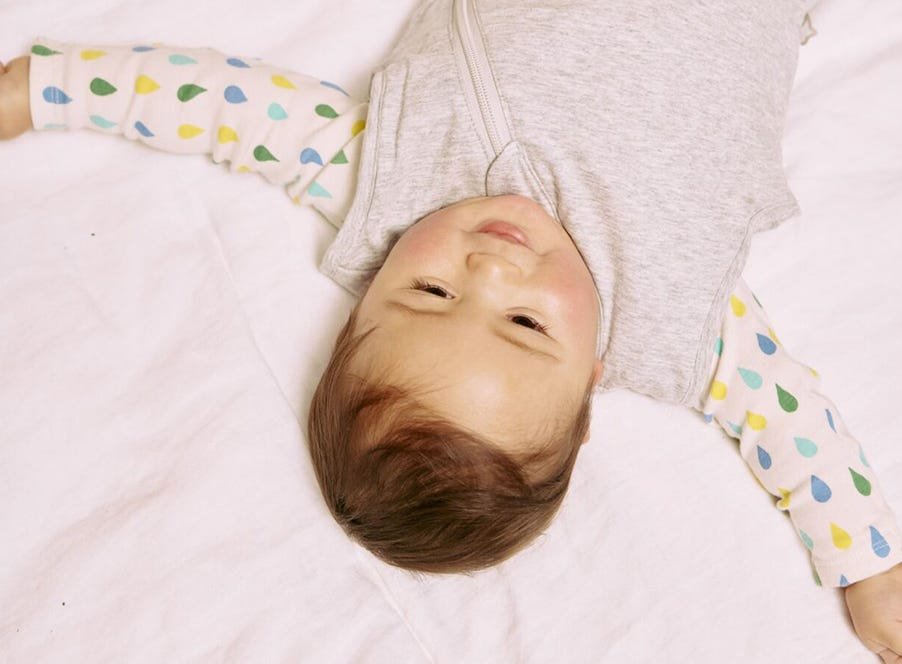
Ultimate XL Nappy Disposal Bundle with 18 Refills
Bundle & Save 40%
Subscription orders can be cancelled at anytime. Free delivery on all subsequent subscription orders. Find out more about subscriptions.
They’re easy and fuss free
Your products are automatically sent to you
You save up to 10% when you sign up for a subscription
You can cancel at any time
Baby Sleep Training: What Is It?

Lots of parents consider introducing sleep training into their little one's nighttime routine and wonder which sleep training method (if any) is right for them.
Over 80% of published sleep training studies report positive outcomes, but it’s worth noting that sleep training may not be right for every parent and baby, and the choice to sleep train or not is a very personal one.
In this post, we'll cover what sleep training is, when parents can start sleep training, and look at some of the most popular sleep training methods in detail.
Sleep training is the process of helping a baby learn how to wind down before bed and self-soothe when it’s time to go to sleep. That means they're put down for bed drowsy but awake, and then learn how to drift off without being rocked, swayed, cuddled, or nursed.
Before you get started, it's important to note that sleep training does take time, and sleep training a baby will be different to sleep training a toddler.
Sleep is a really important factor in the health of babies, toddlers, and their parents! The benefits of sleep training include:
Explore the Range
Every baby is different, so sleep training will take different lengths of time depending on your unique situation and the method you choose to use. For this reason, it’s important to be consistent and patient when you're sleep training.
Most sleep training methods usually take a couple of weeks or longer to work, but with time, consistency, and a little bit of luck, you’ll soon be sleeping peacefully, and your little one will have learned the valuable life skill of how to fall and stay asleep all on their own.
You can also check in with your baby's doctor if you want guidance on when and how to begin sleep training. If you follow a sleep training method consistently and it's still not working after two weeks, they will be able to advise you if your little one is ready and investigate any additional medical factors that could be affecting your baby's sleep.
If you choose to try sleep training, there are some handy bits and bobs that can help make it successful.
There are many different sleep training methods that you can research, but the most important part of sleep training is finding the method that works best for you and your baby!
Remember, your approach to parenting is very personal, don’t feel pressured into using a sleep training method by others if you don’t believe it’s good for you or your baby. Your health visitor or doctor can offer you advice to suit your family's circumstances.
Let's run through some of the most common baby sleep training methods one by one.
Sometimes called the Ferber method – because it was developed by paediatric sleep expert Dr Richard Ferber, check-and-console involves putting your little one to bed when they're drowsy but awake, then telling them goodnight and leaving the room.
If they wake, allow your baby to cry for a set amount of time before you check on them briefly and comfort them by talking in a soothing voice or gently patting their back.
The idea is that the timed intervals of crying gradually get longer by a few minutes until your little one falls asleep.
Over the course of a few nights, you’ll gradually increase the length of these intervals, reducing your presence in baby's room and encouraging them to self-soothe.
This technique requires you to go through your baby's normal bedtime routine, then put them down to bed drowsy, but still awake.
It’s good to be aware that this sleep training method can take some time and requires lots of patience.
If your baby cries for extended amounts of time before they fall asleep their body might not be ready for sleep at your desired bedtime. The bedtime fading method can help to adjust their circadian rhythm to get bedtime to where you want it to be.
After a few nights, move their bedtime 15 minutes earlier and repeat the process with this new bedtime. Then you can gradually move bedtime earlier in 15-minute increments night by night to reach your desired bedtime.
Some parents find that the camping out method (also known as the chair method of gradual withdrawal) works better for older babies who know that you’re still in the room when you aren’t feeding or cuddling them.
Gradually, you can move your seating position a little further away from the bed each night until it’s outside the room – when that happens, your baby will hopefully be ready to sleep without you in the room.
You may find that when your baby falls asleep with you in the room, they might be startled and possibly upset when they wake up and you're not there. Don’t worry if your baby gets upset when you move the chair, you can simply put it back in the last place it was before you moved it.
This method aims to help your toddler learn to fall asleep while you’re not in the room and it’s only suitable for babies over one year old.
However your sleep training journey is going, your baby won't be able to fall or stay asleep if they're hungry, need a nappy change, are feeling under the weather, or are uncomfortable in any way.
Don’t worry if you do encounter some sleep problems along the way, you're not alone! Just be patient and begin your sleep training again when they're feeling better.
The following points have the potential to setback your sleep training journey…
No matter what sleep training method you’re using, the following tips should help to make the experience a little smoother.